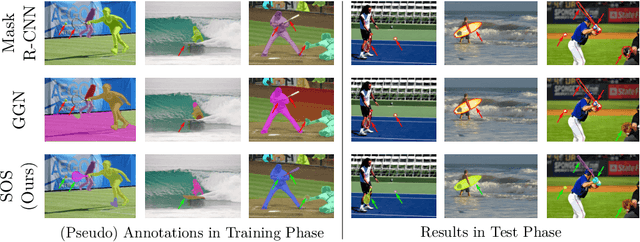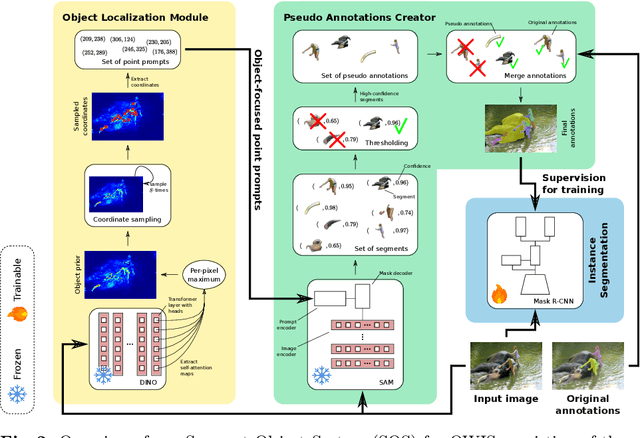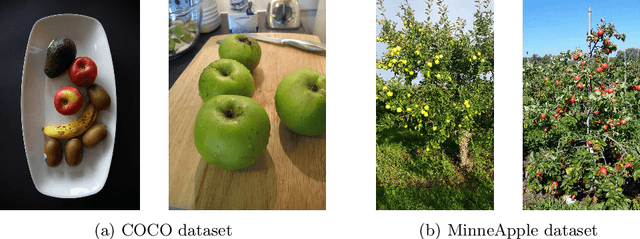Robert Johanson
SOS: Segment Object System for Open-World Instance Segmentation With Object Priors
Sep 22, 2024



Abstract:We propose an approach for Open-World Instance Segmentation (OWIS), a task that aims to segment arbitrary unknown objects in images by generalizing from a limited set of annotated object classes during training. Our Segment Object System (SOS) explicitly addresses the generalization ability and the low precision of state-of-the-art systems, which often generate background detections. To this end, we generate high-quality pseudo annotations based on the foundation model SAM. We thoroughly study various object priors to generate prompts for SAM, explicitly focusing the foundation model on objects. The strongest object priors were obtained by self-attention maps from self-supervised Vision Transformers, which we utilize for prompting SAM. Finally, the post-processed segments from SAM are used as pseudo annotations to train a standard instance segmentation system. Our approach shows strong generalization capabilities on COCO, LVIS, and ADE20k datasets and improves on the precision by up to 81.6% compared to the state-of-the-art. Source code is available at: https://github.com/chwilms/SOS
S$^3$AD: Semi-supervised Small Apple Detection in Orchard Environments
Nov 08, 2023



Abstract:Crop detection is integral for precision agriculture applications such as automated yield estimation or fruit picking. However, crop detection, e.g., apple detection in orchard environments remains challenging due to a lack of large-scale datasets and the small relative size of the crops in the image. In this work, we address these challenges by reformulating the apple detection task in a semi-supervised manner. To this end, we provide the large, high-resolution dataset MAD comprising 105 labeled images with 14,667 annotated apple instances and 4,440 unlabeled images. Utilizing this dataset, we also propose a novel Semi-Supervised Small Apple Detection system S$^3$AD based on contextual attention and selective tiling to improve the challenging detection of small apples, while limiting the computational overhead. We conduct an extensive evaluation on MAD and the MSU dataset, showing that S$^3$AD substantially outperforms strong fully-supervised baselines, including several small object detection systems, by up to $14.9\%$. Additionally, we exploit the detailed annotations of our dataset w.r.t. apple properties to analyze the influence of relative size or level of occlusion on the results of various systems, quantifying current challenges.
Localizing Small Apples in Complex Apple Orchard Environments
Feb 23, 2022



Abstract:The localization of fruits is an essential first step in automated agricultural pipelines for yield estimation or fruit picking. One example of this is the localization of apples in images of entire apple trees. Since the apples are very small objects in such scenarios, we tackle this problem by adapting the object proposal generation system AttentionMask that focuses on small objects. We adapt AttentionMask by either adding a new module for very small apples or integrating it into a tiling framework. Both approaches clearly outperform standard object proposal generation systems on the MinneApple dataset covering complex apple orchard environments. Our evaluation further analyses the improvement w.r.t. the apple sizes and shows the different characteristics of our two approaches.
 Add to Chrome
Add to Chrome Add to Firefox
Add to Firefox Add to Edge
Add to Edge